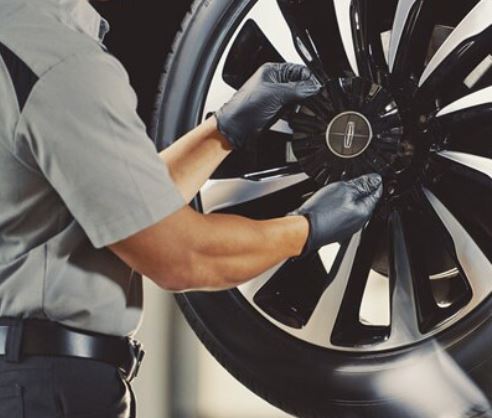
Few things matter more to your safety on the road than your tires. While driving at speed, old and poorly-maintained tires can blow out or lead to skids. This is especially true in wet or wintry weather. Let’s take a look at eight certain signs that you should visit your local Lincoln dealer for a set of new tires soon.
Large Cracks
UV rays from sunlight, extreme weather, and fluctuations in temperature can all break down the structural integrity of tire rubber over time. The first evidence of such damage tends to be cracks. If you ever see cracks of over two inches in the sidewalls of your tires, those tires are no longer safe to drive upon and it’s time for replacements.
You’ll often find hairline cracks in the voids of the treads. As long as such cracks are under two inches in length, they’re usually nothing to worry about. But any larger cracks mean the tire is on its last legs and should be swapped out. This is especially true if you can see the under fabric beneath the rubber.
Deep Cuts
Tires frequently get cut by small objects on the road. Similar to cracks, if you notice a very small cut, it’s unlikely to be a problem. But if you find a larger gash in the rubber, that tire probably has to go.
Bulging Blisters
Certain bumps and scrapes leave damage in the form of blisters on the rubber. Blisters also occur when the surface rubber layer becomes disconnected from the layer underneath. Any bulge or blister larger than a penny means the tire rubber is compromised. It’s time for a new set of tires.
Embedded Objects
If you notice the head of a nail poking out of the rubber, you most likely have a puncture. Sometimes, punctures can escape detection because the embedded object is keeping the air inside. But a punctured tire is in danger of blowing out on the road at any time. The hole might be repairable, or you might need a replacement.
Consistent Air Loss
Any inexplicable air loss is a sign of serious tire trouble. There’s likely a hidden cut or puncture somewhere. Have a technician examine the tire for you to determine if it’s fixable or not.
Negligible Tread Depth
If a tire survives the above-mentioned types of damage, then its tread depth will eventually diminish to a dangerous level. Once tread depth gets close to 2/32 of an inch, that tire can no longer maintain a safe level of traction. It’s time for a new one.
Winter’s Approaching
During the winter months, 2/32 of an inch in tread depth is far too shallow. Icy roads require at least 5/32 of an inch to keep a firm grip. Before winter starts, you should really be swapping out your summer tires for winter tires. Tires designed for the cold are made from a more flexible form of rubber and have more sophisticated treads designed to scoop into the snow and maintain better traction on ice.
Your Lincoln Dealer Recommends Replacements
It’s important to examine your own tires at least once a month. But when you take your car in for routine servicing, always have the technician take a look at the tires as well. They’ll often be able to spot small problems which you might have missed.
To have your tires inspected, rotated, or replaced, visit Bayway Lincoln. Since opening their first dealership in 1992, the owners Darryl and Linda Wischnewsky have focused on building customer relationships with integrity, consistency, and nothing short of exceptional service.
Image Via Lincoln





